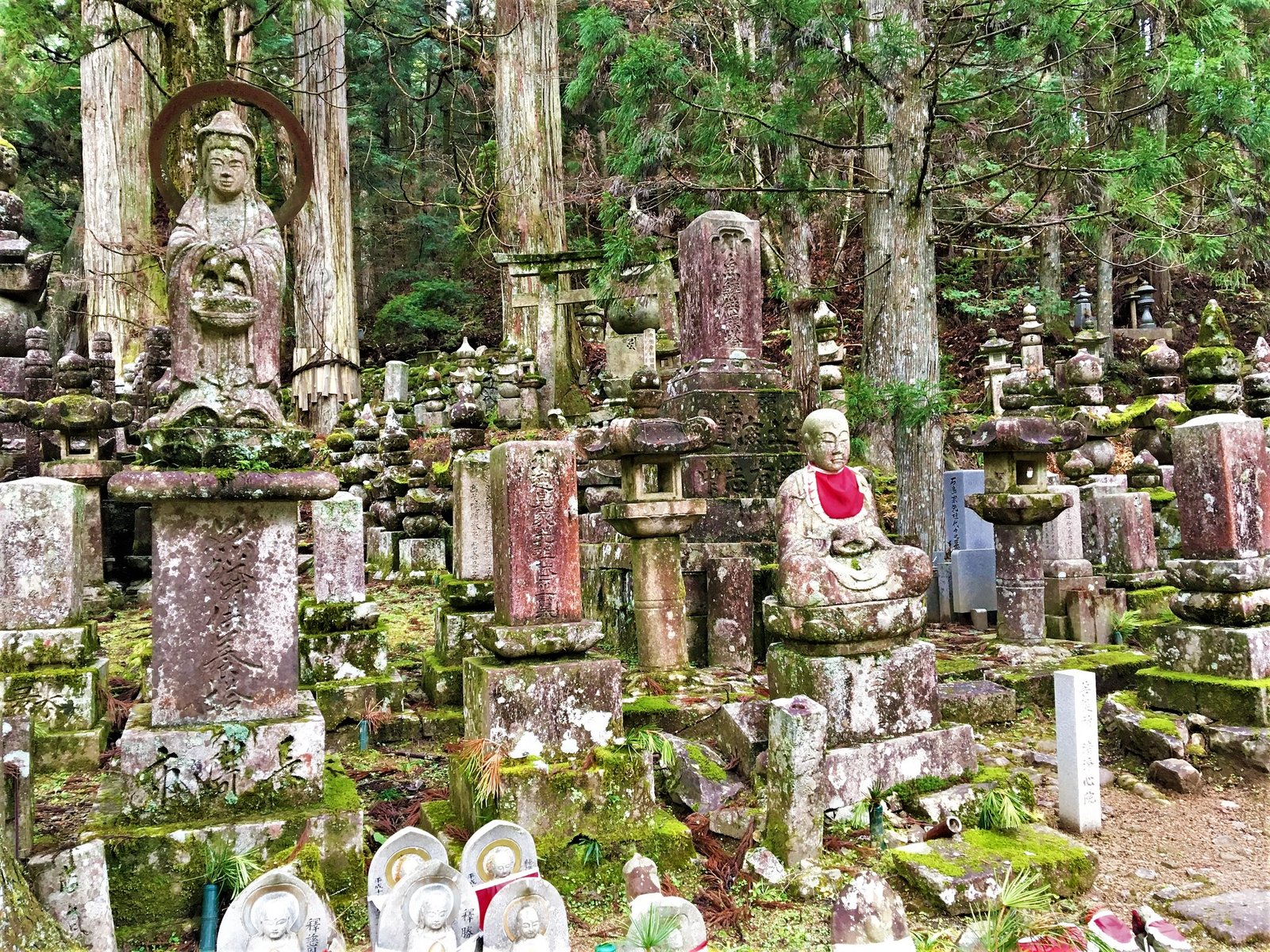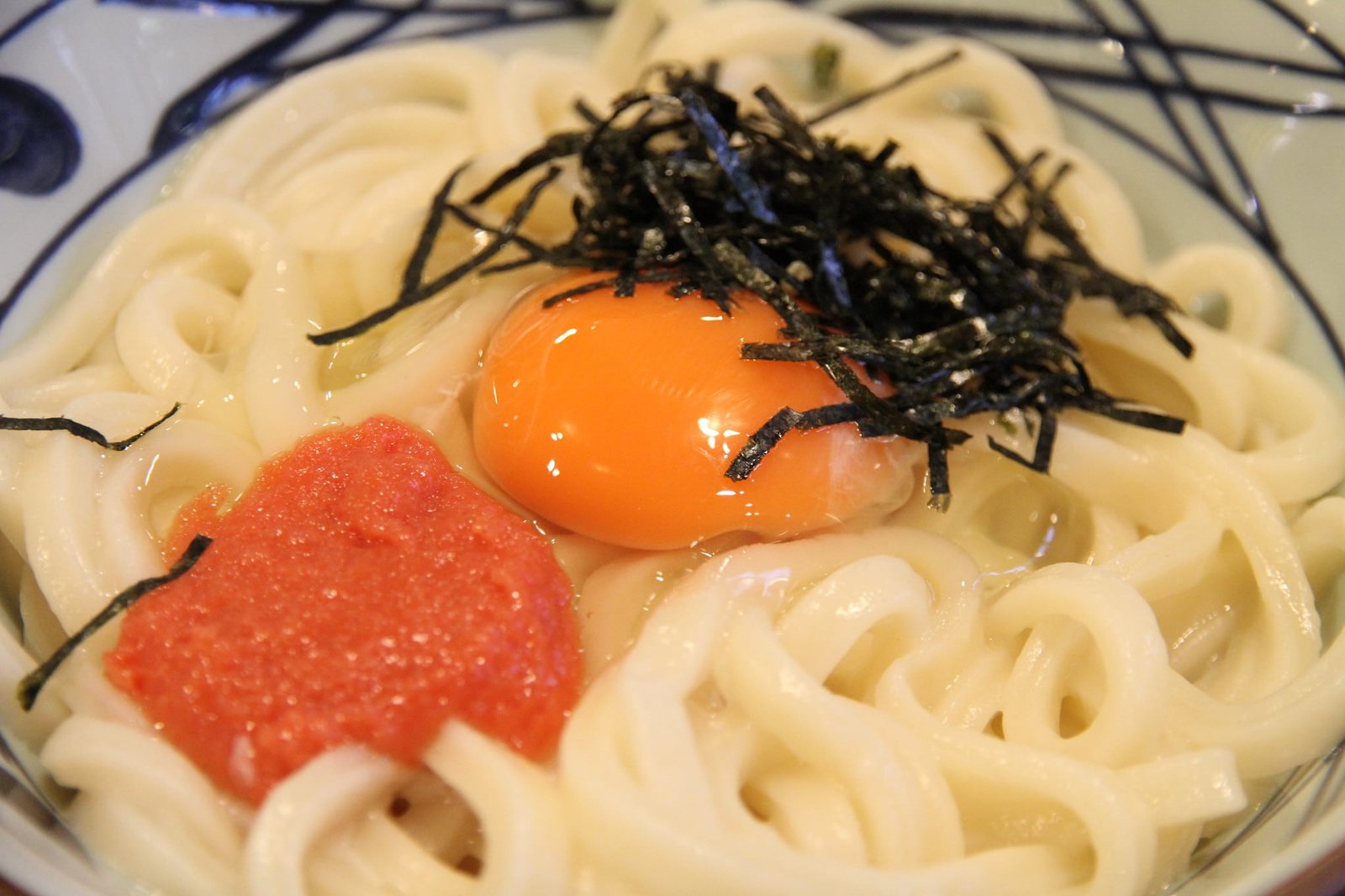Last month, we did something irresponsible. Are you ready? We paid $15 for a cup of coffee. Yes, frugal backpackers who run this blog did that. Before you judge us for the splurge, all I can say is that we did it in the fancy, four-story Starbucks on Chicago's Magnificent Mile, and our outing was a reward for the year of staying at home and drinking strictly home-brewed coffee. Still, $15 for a cup of coffee? The ridiculous price was in part dictated by the performance that accompanied the preparation of our cup of joe. The barista skillfully operated a siphon that looked like something out of a chemistry lab and explained the brewing process. People around us excitedly took pictures and videos of our coffee being prepared. But, mainly, the steep price was dictated by the coffee beans used. The Blue Mountain beans, to be exact.
The reason why one of our first outings after a full year of COVID restrictions was to a coffee shop is that we love coffee. A mug of light-roast, single-origin Colombian coffee is how I often start my day. Many entries in this blog were written at a local coffee shop on lazy Saturdays and Sundays. Through the years, we also traveled to a lot of “coffee” destinations, like Guatemala, Panama, and Brazil. If it were not for COVID, we would've visited Colombia and its “coffee axis”—the country’s premier coffee-growing region—in December 2020. And of course, we've been to the Blue Mountains too!
The Blue Mountains are situated in the lesser-visited eastern part of Jamaica, with the city of Kingston sitting at the foothills of this beautiful mountain range. The Jamaican capital, although not completely safe, was well worth the stop. Its urban grittiness, reggae clubs, and jerk chicken stands gave us a good introduction to Jamaican history and way of life. Capital cities rarely rely on tourism as their main source of income, and that makes them irresistibly authentic. Yet, the main reason why we took a four-hour bus ride from Montego Bay to Kingston was that it was a logical base for a day trip to the Blue Mountains.
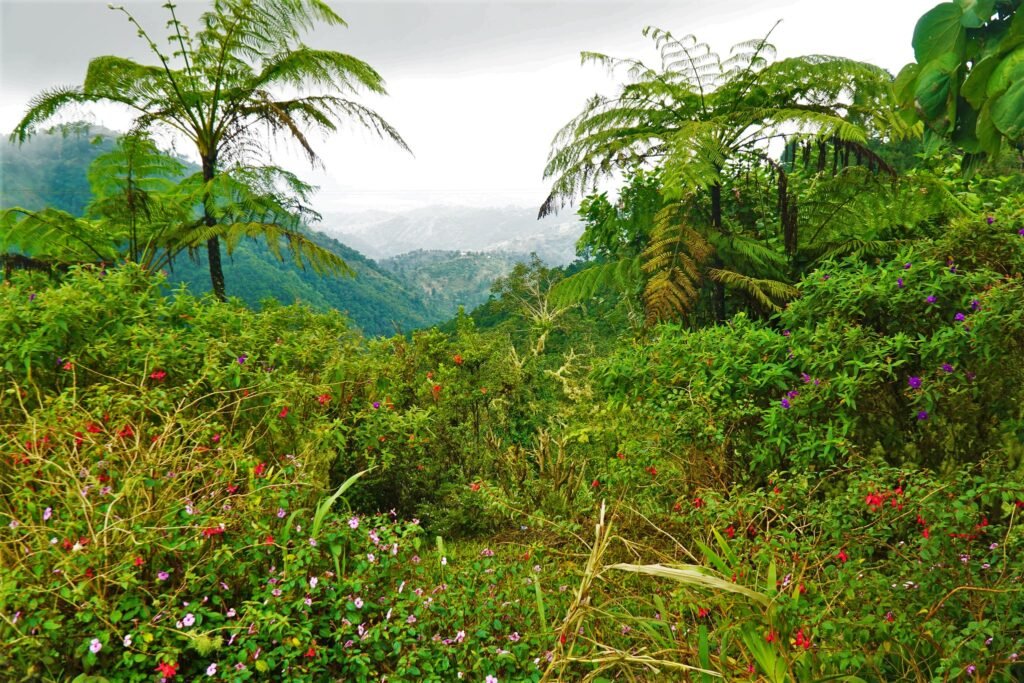
On our second day in Kingston, we hired a driver who took us to the mountains. As we were leaving the city, the Blue Mountains majestically soared over us. Our little car growled and stubbornly climbed uphill, with our driver forcefully rocking back and forth in his seat, as if trying to help. The landscapes were spectacular and left us gaping at perfect verdant hills meeting the blue Jamaican sky. The driver made frequent stops, so we could take short hikes and admire the views. Sitting on a bench high in the mountains with a bird's-eye view of Kingston in the distance, we were enveloped in a sweet fragrance of exotic flowers with hummingbirds hovering next to us.
But we were there not just for the views. Blue Mountain coffee is the world's highest mountain-grown coffee, grown at elevations over 7000 feet. The mountains have a unique microclimate and fertile soil, providing excellent conditions for growing premium coffee. Blue Mountain coffee is one of the most expensive in the world. We couldn’t help but wonder – is it really that good? To find the answer, we headed to one of the coffee farms.
At the entrance, we were greeted by a stocky Jamaican in an orange polo shirt—our guide. The tour group was small: just us and a newlywed couple from England. The guide started with the history of coffee and described the process of growing, picking, and roasting coffee. As he was going through the memorized facts of his presentation, we were impatiently looking at a pot of coffee that was waiting for us. The best part of any tour is sampling coffee that was grown and harvested nearby. Once the guide finished his presentation, he invited us to a taste test. The coffee was great. It was very aromatic and smooth, with no bitter aftertaste. Was it worth the price? As it was explained to us, the high price was partially dictated by the fact that most of it is sold to Japan. And Japan is willing to pay and even overpay for it. The farm that we visited was owned by a Japanese family, and the pictures of the Japanese owners were prominently displayed on the premises.
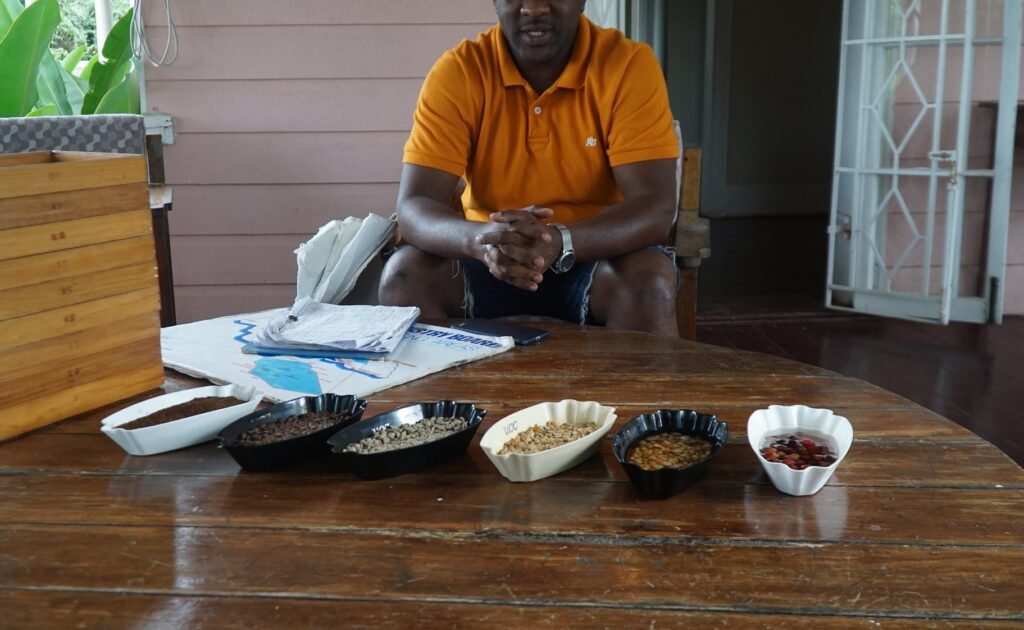
As we were relaxing on the patio and chit-chatting with the British couple, a problem of an unexpected kind was brewing (pun intended). After drinking a cup of coffee, our host poured himself another cup, and then another one. His monotonous voice started to get high-pitched, and he was now speaking with a faster tempo. He occasionally trailed off the presentation into tangents about poverty and local life. The potent Jamaican coffee was kicking in. Unaware of these changes, Julia asked what at the time seemed like an innocent question:
"George, if Jamaican coffee is such a hot commodity and so expensive, why doesn’t Jamaica increase its production?"
And that’s when the hell broke loose.
“BECAUSE OUR GOVERNMENT IS INCOMPETENT!!!”, the guide was almost screaming from the top of his lungs into the chilly mountainous air, with his eyes rolling wildly. Still clenching his cup, he continued: “ALL THEY DO IS THROW MONEY AT SUGAR CANE AND BANANA PRODUCERS WHILE TOTALLY IGNORING THE GOLD THAT IS GROWING RIGHT HERE!!! LOOK AROUND! THIS IS THE FUTURE OF JAMAICA!”
The presentation was over. He went on rambling about politics, corruption, and how unfairly things were done in Jamaica for a good half an hour. The well-mannered newlywed couple didn’t know what to do with themselves and politely wandered off. I concentrated on tasting samples. Meanwhile, Julia was absolutely loving this man’s rant, occasionally sprinkling more gasoline into his fire.
“I’ve never heard of Jamaican sugar! Of course, Jamaican coffee is world-renowned!”
Finally, the guide realized he had lost the entire group except for Julia, gathered us back together, and took us for a walk around the farm. There, surrounded by green coffee trees, he finally relaxed and stopped listing his grievances. We tasted coffee fruits right off the tree and learned how other trees support and shade the growing coffee plants.
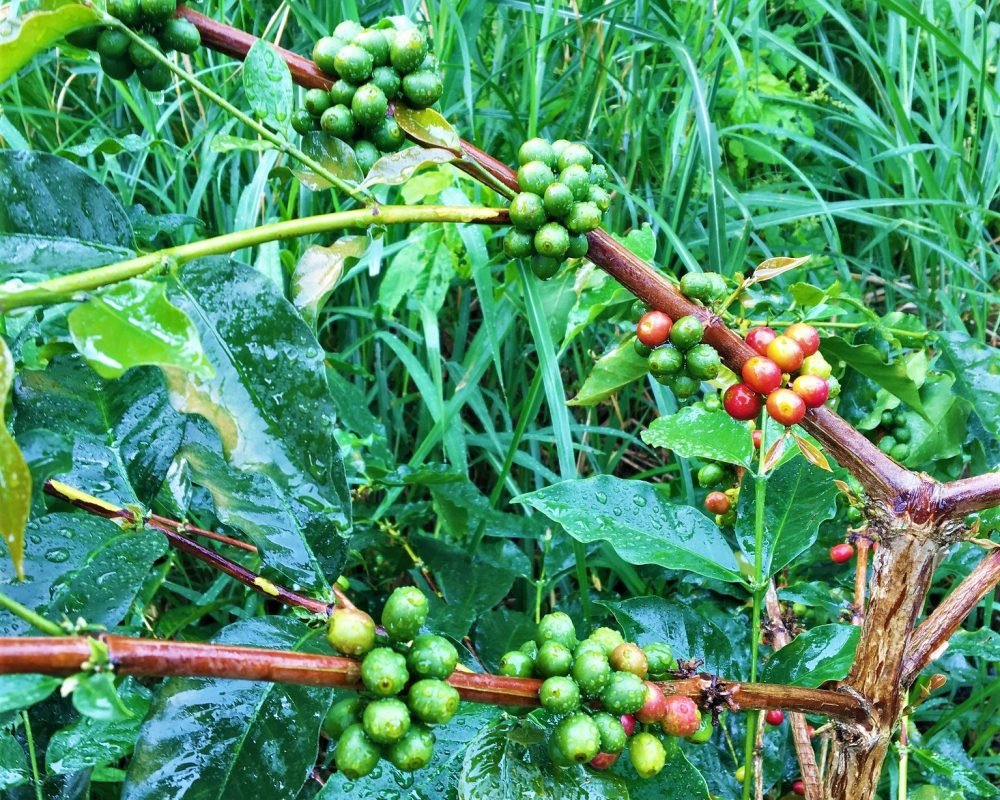
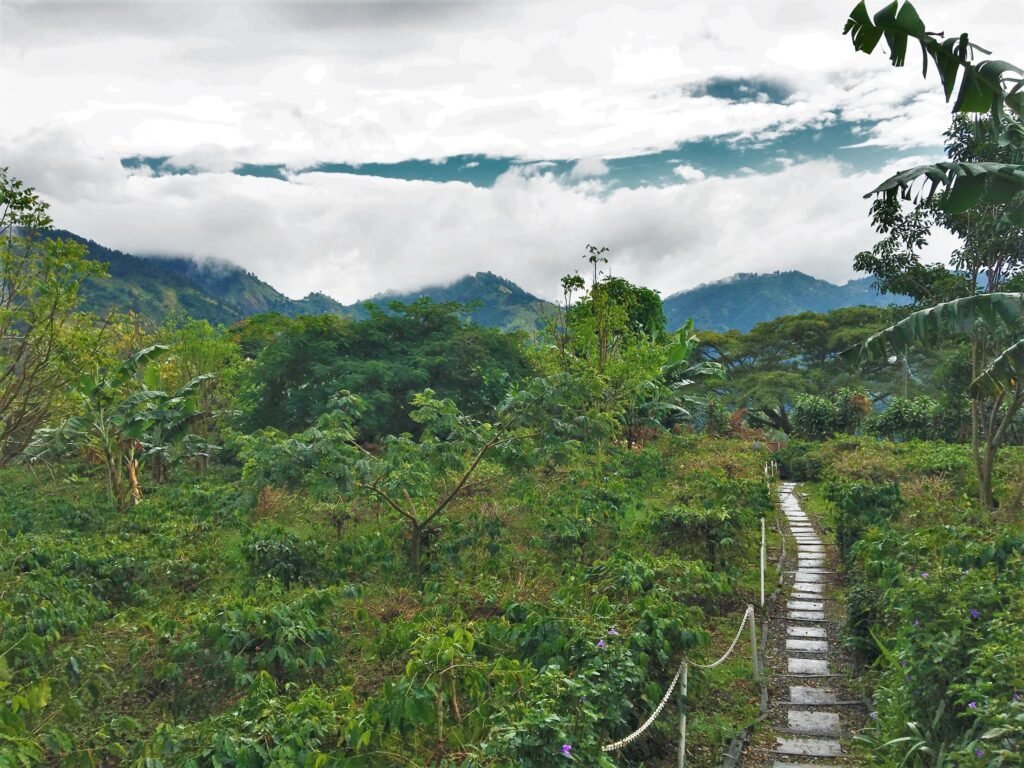
At the end of the tour, we bought a few bags of coffee to go, but in all honesty, those same beans at home just didn’t taste as good as they did on the farm. The guide walked us to our taxi. He waved as we pulled off, a small coffee cup still in hand. Julia excitedly waved back.
“It’s so rare to have someone tell you the truth about their country, about all their frustrations. Usually, guides just stick to the memorized script.”
“That man had three cups and lost his mind. We need to be careful with this stuff.” I gestured to the coffee bags we bought. “One serving per day only!’
